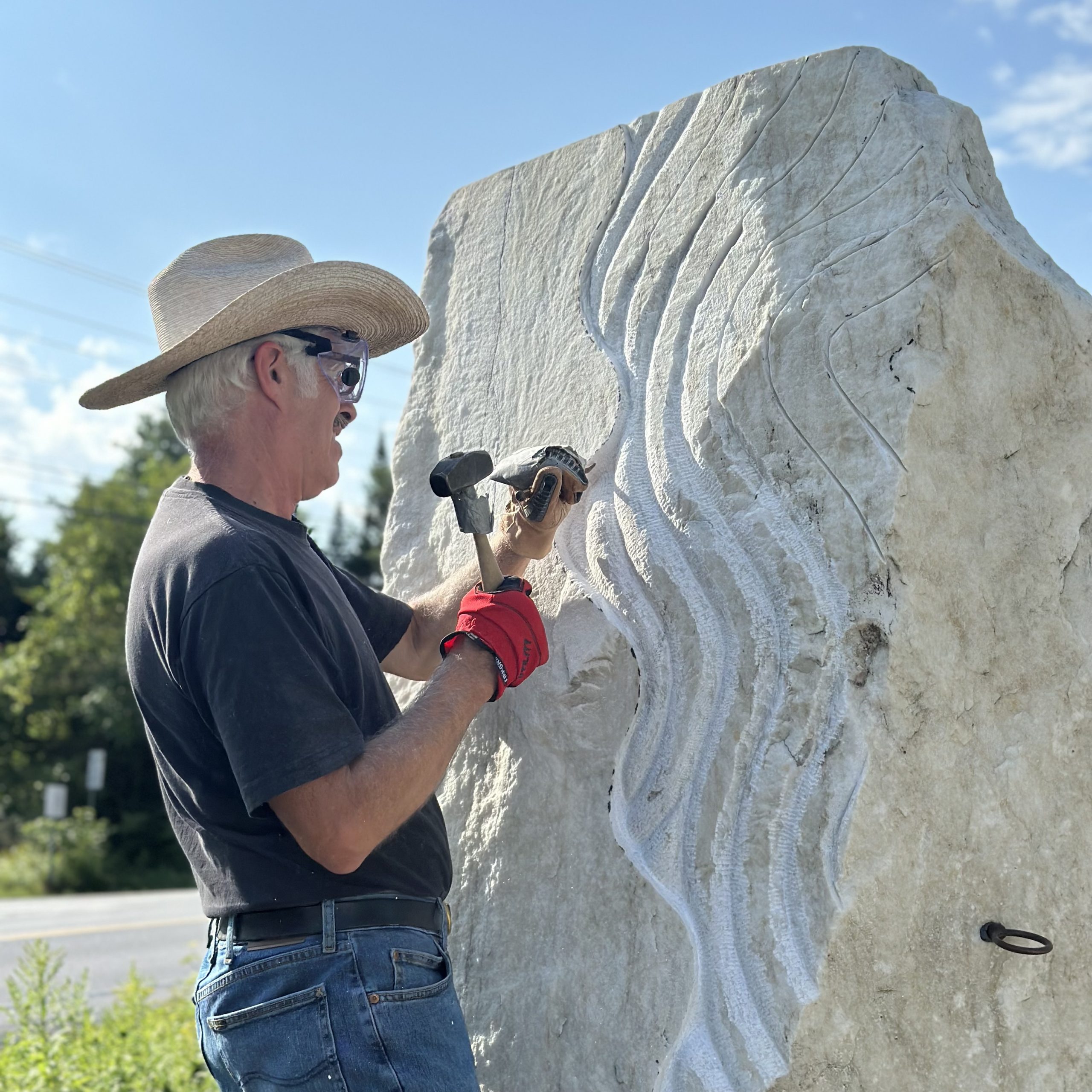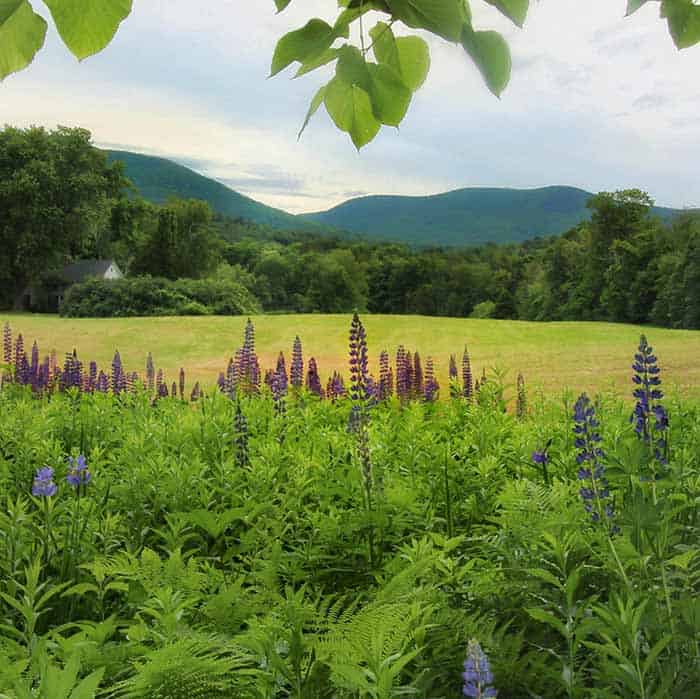Carving Marble with Stan Sears
Aug 31 2023 • Explore, Get Outside

Recently in Dorset at the popular swimming hole Norcross-West Marble Quarry, you may have noticed some of the marble has started to look a little different. Danby-based artist Stan Sears has been installing a public art piece titled Ripple which is part of a series of current pieces that explores the idea of écorché (French, meaning flayed figure of the study of what’s beneath) as a kind of conceptual framework. The concept of écorché in a way relates to the quarry itself, under the surface of the water lies the history of the marble quarry that once was. Through the process of using mostly hand tools, Stan has been chipping away at one of the entrance columns, creating beautiful ribbons of marble while leaving the rest of its natural, rough surface.
Stan, who is a sculptor and retired professor of art at Macalester College in St. Paul, Minnesota, moved to Danby several years ago after returning to his family’s roots in Vermont (Ludlow mostly). Upon moving here and getting to know this area’s rich history in the marble industry, it seemed like a good fit to start using marble as a art medium. One of his first pieces here was sculpting an 8,000 pound block of Danby marble that was purchased by Macalester for a piece on their campus. While working with marble has its challenges – needs to be moved by crane, hard to transport, etc. – working at the quarry in Dorset VT has allowed him to work on pieces already in their final location and in front of a public audience.
Besides marble, Stan also works with standing trees and has created a seriehttps://www.dorsetvt.com/carving-marble-with-stan-sears/s of public art pieces around this same effect of ‘seeing what’s beneath the surface’. Two of those pieces can be seen locally: one at the Southern Vermont Arts Center in Manchester and another at Smokey House Center in Danby. While you might think this hurts the tree, Stan points out that he either carves on trees that are already dying or, in Smokey House Center’s case, worked with a forester to girdle trees that needed to be removed anyway with his carvings (for the purpose of opening up land so other trees can get more sunlight or where growing too close to buildings). Because these carvings are outside and on untreated wood, they won’t last forever, making them a part of the natural process of a decaying tree. He has mostly worked with ash, basswood and maples but is looking to work with sycamore and other species soon.
When you look at Stan’s sculptures, it’s easy to see the resemblance of nature-like muscles, waves or even skeins of fiber. Stan is often inspired by fiber and his family’s farm in Danby where he and his wife raise sheep. His wife, Andrea Myklebust, owns Mountain Heart School of Crafting, sells wool skeins made from their animals and teaches fiber classes. Stan was even recently inspired by a buckhorn tree their sheep got into and chewed on, which made a crosshatch pattern on a limb. He takes images like these and others he comes across for carving ideas. His carvings also often contain cultural references like a proposal he has going for a place in Portland, Maine where the carvings would be inspired by the bowline knots the ships use to tie onto shore with.
Stan and Andrea have completed more than 70 large-scale projects across the United States, including at the Charlotte-Douglas International Airport, LA Metro Gold Line, Augsburg College, City Hall in Allen, Texas, and the Ted Stevens International Airport in Anchorage, Alaska. Locally, he has had shows in Chester, at Southern Vermont Arts Center and at the Space Gallery in Burlington. Stan has taught classes at SVAC for both adults and children. You can find more about him and see his works on his website at http://www.myklebustsears.com/home.html and on social media @myklebust.sears.





